by successfulbob | photography, photography - art quote, photography education
Is your photography unique?
Do you fully bring your inner self when you create images? If not, then there’s a distinct possibility you are not creating art. You are just making pictures.
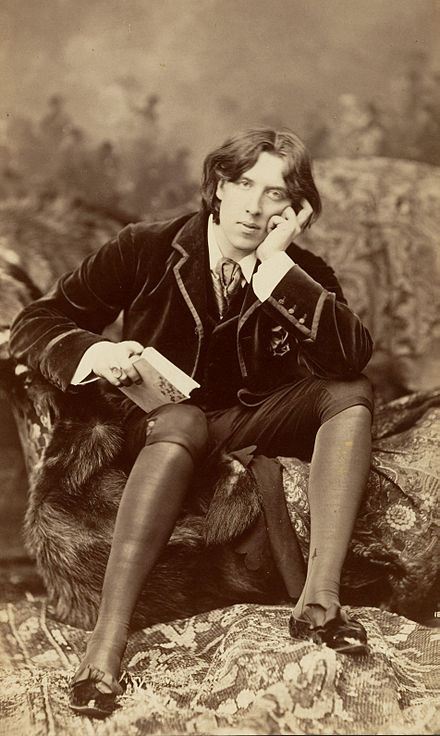 Today I dug up a quote from poet, playwright Oscar Fingal O’Flahertie Wills Wilde Photo by Napoleon Sarony
Today I dug up a quote from poet, playwright Oscar Fingal O’Flahertie Wills Wilde Photo by Napoleon Sarony
 “A work of art is the unique result of a unique temperment.” Oscar Wilde
“A work of art is the unique result of a unique temperment.” Oscar Wilde
I’ve found my strongest images come forward when I am totally in the moment working on creating an image I really want to see made. Not necessarily because I am getting paid to make the image. But experience that I’ve acquired over the years allows me to bring creative things forward when on paid shoots even though
That’s why personal projects are so important to your growth as a photographer. You get the opportunity to explore, experiment and experience so much more as you create. You then are able to carry those forward into all your photography. I’ve also experienced the cross-pollinating of different genres of photography helping me create better photography. My wedding work helped in the fashion. My commercial work helped inform my wedding images. Playing while creating art images has worked it’s way back into my advertising photography.
So I ask again, “Are you bringing you to your photo shoots?
Yours in Photography, Bob
by successfulbob | fine art photography, photography - art quote, photography education
A hand went up in the back of the room at a presentation and someone asked, “What’s your definition of Fine Art Photography?” As it had been a long day I kind of joked with a line borrowed from the late Dean Collins, “Beauty is in the eyes of the check book holder!”
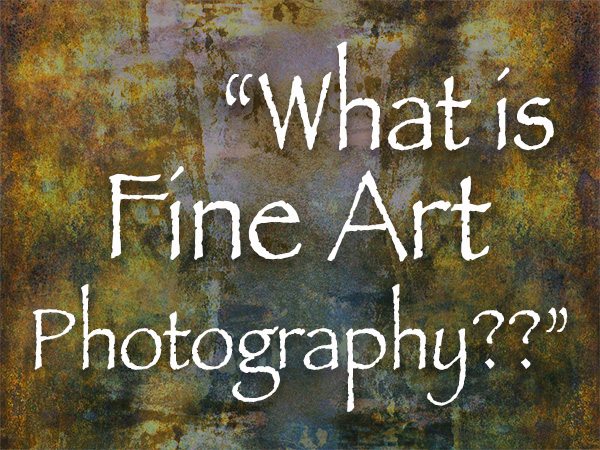 What is Fine Art Photography??
What is Fine Art Photography??
Today’s Sunday Photo/Art Quote is a little more introspection and thought about the question as we photographers tend to agonize over it on a regular basis. So here goes….
Let’s start with some semi-official definitions on Art and Fine Art in general. (Thanks to Jerry Burch for theses links from our email conversation!)
Take some time to follow the links for some more in-depth observation on the subject with the links below. Go ahead… I’ll wait and give you my thoughts below after you poke around on the web. If you find something cool others should see bring the link back here and post in the comments section…
From Collins World English Dictionary
fine art
1. art produced chiefly for its aesthetic value, as opposed to applied art
2. ( often plural ) Also called: beaux arts any of the fields in which such art is produced, such as painting, sculpture, and engraving
From Dictionary.Com
fine art
a visual art considered to have been created primarily for aesthetic purposes and judged for its beauty and meaningfulness, specifically, painting, sculpture, drawing, watercolor, graphics, and architecture.
From Wikipedia
Fine art photography
Fine art photography is photography created in accordance with the vision of the artist as photographer.
Chip Jones Fine Art Photography Blog post
One challenge that many artists face throughout their careers is having a brief, but articulate description of their work at the tip of their tongue. You know, like a two-minute elevator speech that can be expressed in a moments notice when asked. For most people, this might seem like something that’s easy to do. For artists though, this can…. See link for the rest of Chip’s post.
The question you ask about Fine Art Photography is one that has been difficult to answer because there are so many facets to it.
There are photographers in the portrait industry that I consider to be ‘Fine Art’ photographers. Much of their work would stand up to the classic portraits created over the centuries that will still be considered beautiful examples of the best of the genre a century from now. People like Tim Kelly in Florida and Tim and Beverly Walden in Kentucky. Their work is exquisite! Does that make all portrait photographers ‘Fine Art’ photographers? Not by a long shot.
Ansel Adams was what was considered to be a ‘Fine Art’ nature photographer because of the detail and techniques he created and mastered for getting the vision from his head onto paper. I see stunning examples of other Landscape photographers that would definitely fall into the ‘Fine Art’ photography category but that doesn’t make every landscape image created a ‘Fine Art’ piece.
There are stellar images made by photographers creating images using multiple elements from different photos in composites that are museum worthy (see the work of Thom Rouse in Illinois as one example).
I guess I’ve been formulating a more concise answer as I answer your question. So here goes…
‘Fine Art Photography’ to me is defined by the mastery of technique to create an image. Do I consider myself to be a ‘Fine Art Photographer’? Yes I do. Is every image that I create ‘Fine Art’? Definitely not. Each individual work should be judged on its own merits as to it worthiness to be called ‘Fine Art’.
Join the conversation in the comments section.
Yours in Photography, Bob
by successfulbob | photography - art quote, photography education
“That’s not really photography!”
“You cheat!”
“I never crop I only show what was in the frame originally.”
“I show exactly what was captured by the camera…”
Today’s Photo/Art quote has a lot to do with vision. What does the final image look like? Does it really matter how it arrived in it’s final form? I don’t think so…
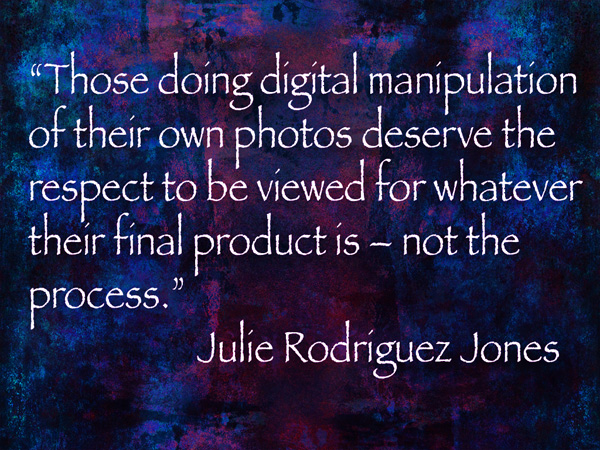 “Those doing digital manipulation of their own photos deserve the respect to be viewed for whatever their final product is – not the process.” – Julie Rodriguez Jones (more quotes from Julie)
“Those doing digital manipulation of their own photos deserve the respect to be viewed for whatever their final product is – not the process.” – Julie Rodriguez Jones (more quotes from Julie)
If you follow my work you know that I am an anything goes kind of guy when creating my artwork. I use multiple layers, textures, blend modes, masks, hue saturation layers and anything else I can think of to get the vision in my head out into the world.
When working on my commercial images I have no problem creating different exposures of the same scene and blending them together with masks to give a better rendition, closer to what the eye will see in that scene, than any one single exposure might.
To those who believe that any photography is “pure photography” I wish for you to think hard about it. All thoughtful photography is art and is very subjective to the maker even if there is no ‘visible’ manipulation.
Many things factor into a photographic image. Lens choice. Choosing what to leave in – or out – of the frame at time of capture. Exposure. ISO. Format choice. Time of day. Add light? Block light? Focus. Depth of field. Black & white, sepia tone or color? High angle or low? When prepping to print – Retouching. Dodging and burning. Choice of medium to print on. The artistic choices are endless…
I don’t feel that someone who has taken an image further via digital methods should be penalized for their choice of tools. Now do some digital images not appeal to you? Maybe not. Or ‘straight’ prints not appeal to you? OK, fine… Please don’t judge how an image was created. Judge the effect the final image has on you regardless of the creation methods.
Ansel Adams is often put forth as one of the great ‘straight’ photographers. But an in-depth study of his work and understanding of how Adams manipulated his medium of film and printing will tell you that his images stand out not because of being straight with his photography but pushing the limits of the tools he had available at the time. He did special exposure and development of his film. He choose the grade of paper on which to print. He spent days manipulating the final image from a negative by dodging and burning a print until it was what he wished it to be.
In 1984 when his autobiography came out he said, “I wish I could be around in 20 years to see what people could get from my negatives via electronic means. It would not be the machine that would be responsible for the final print, but the operator of it. While the images would not necessarily look like mine I believe they would be able to get much more information from the negative than through traditional means.”
Celebrate great imagery no matter how it is created…
Yours in Photography, Bob
by successfulbob | photography, photography - art quote
I’m at the airport in Chicago after presenting at the Out of Chicago Conference so this Photo/Art Quote is getting published a wee bit late. Thanks for bearing with me! Here we go…
Let’s head to the funny papers for some inspiration this week. Ever read the cartoon Dilbert? Scott Adams is the author and I found a quote by him about creativity that we can use. It actually contains two ideas strung together that I believe wholeheartedly.
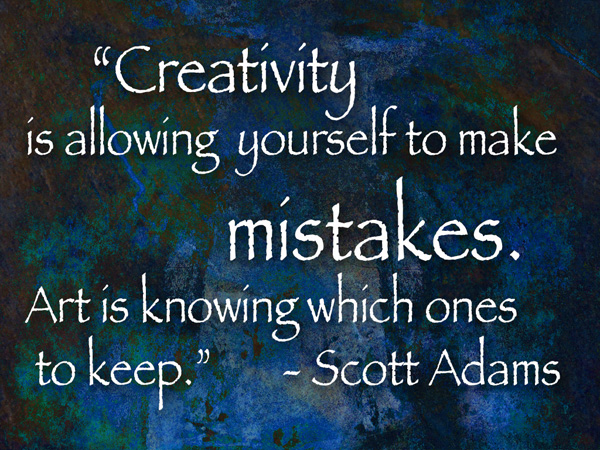 “Creativity is allowing yourself to make mistakes. Art is knowing which ones to keep.” – Scott Adams
“Creativity is allowing yourself to make mistakes. Art is knowing which ones to keep.” – Scott Adams
Creating art can be accelerated by experimentation. Trying new things and giving yourself permission to fail is key. There is a tendency to keep recreating things with which we have had success. We set lights in the same place most of the time, or worse, lock them down without thought of who the subject is and what changes could really highlight the best features of our subject.
Or when we work with our manipulation programs like Adobe Photoshop we repeatedly use the same settings. I encourage you to take some chances. Play with Photoshop. Try new things. Play some more! By the way if you haven’t upgraded to Photoshop CC yet know that they have the $9.99 a month rate for getting the Lightroom & Photoshop bundle. Learn more here.
Get on you computer and mash down some buttons you’ve never tried before. Use new blend modes. don’t worry if it doesn’t work out perfect. You can always try again!
Yours in Photography, Bob
by successfulbob | photography - art quote
Once you move past learning the basics and advanced features of your camera gear it’s time to push the creativity button.
Oh, wait! there is no creativity button. Darn it!
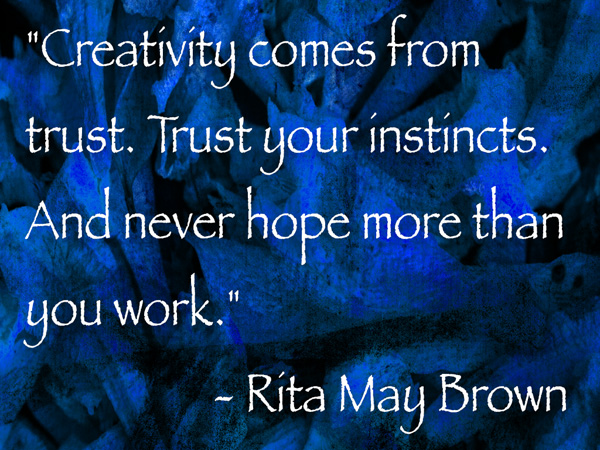 “Creativity comes from trust. Trust your instincts. And never hope more than you work.”
“Creativity comes from trust. Trust your instincts. And never hope more than you work.”
Rita May Brown – novelist, poet, screenwriter, activist
The last line of this quote is the base and most important part. Work. It’s the most important part of creativity. It’s great to have ideas. It’s great to have concepts. But without digging in and working hard to make it happen it never will… Once you have made a commitment to an idea work it for all it’s worth. And, trust you are heading in the right direction…
 Today I dug up a quote from poet, playwright Oscar Fingal O’Flahertie Wills Wilde Photo by Napoleon Sarony
Today I dug up a quote from poet, playwright Oscar Fingal O’Flahertie Wills Wilde Photo by Napoleon Sarony “A work of art is the unique result of a unique temperment.” Oscar Wilde
“A work of art is the unique result of a unique temperment.” Oscar Wilde








